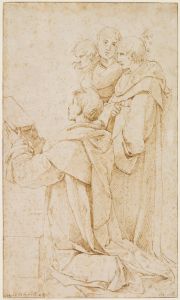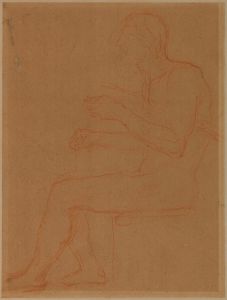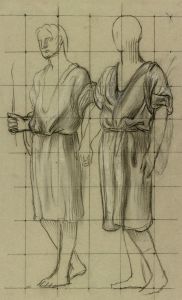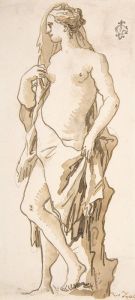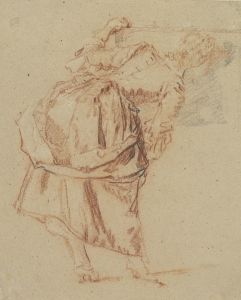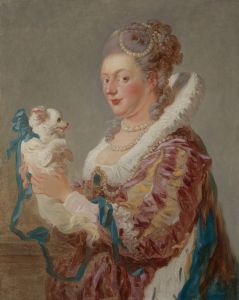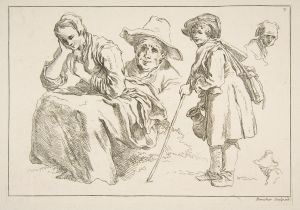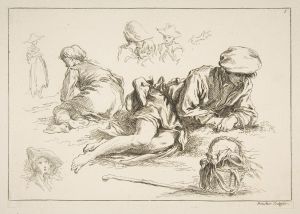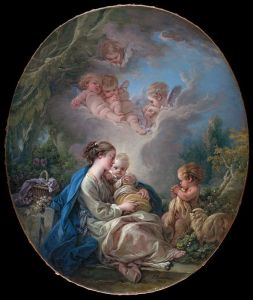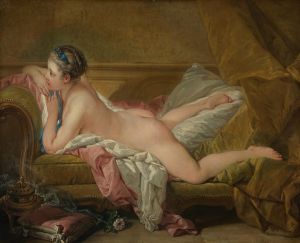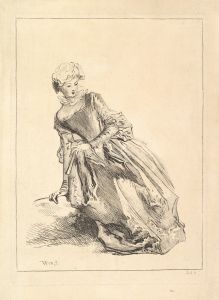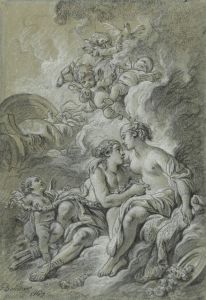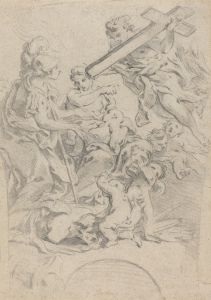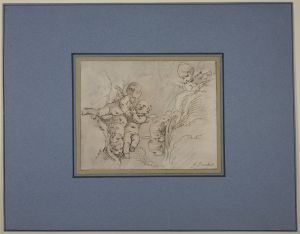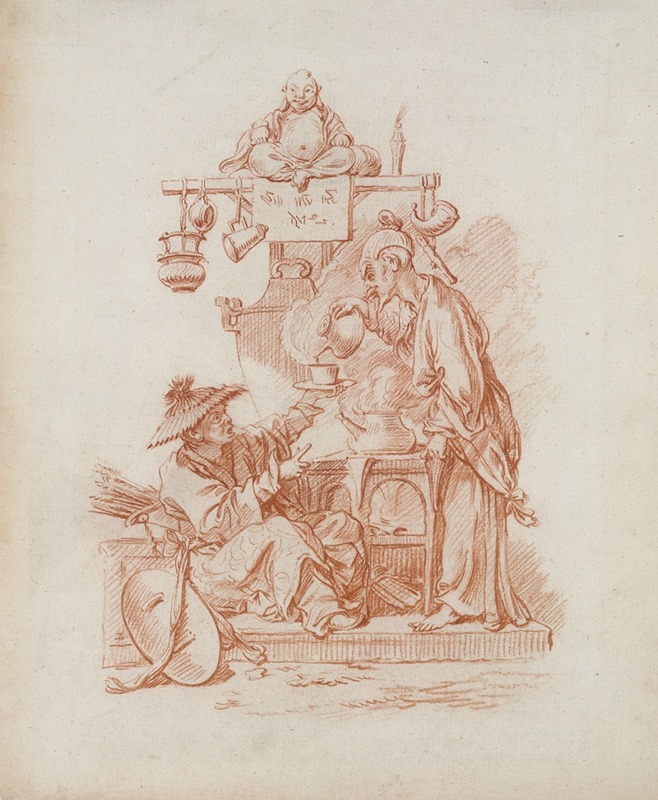
Fire
A hand-painted replica of François Boucher’s masterpiece Fire, meticulously crafted by professional artists to capture the true essence of the original. Each piece is created with museum-quality canvas and rare mineral pigments, carefully painted by experienced artists with delicate brushstrokes and rich, layered colors to perfectly recreate the texture of the original artwork. Unlike machine-printed reproductions, this hand-painted version brings the painting to life, infused with the artist’s emotions and skill in every stroke. Whether for personal collection or home decoration, it instantly elevates the artistic atmosphere of any space.
François Boucher, a prominent French painter of the Rococo period, is renowned for his idyllic and voluptuous paintings that often depict classical themes, pastoral scenes, and allegories. Among his notable works is the painting "Fire," which is part of a series representing the four elements: Earth, Air, Fire, and Water. This series exemplifies Boucher's mastery in combining mythological subjects with the Rococo style's characteristic elegance and decorative flair.
"Fire" was completed in 1735 and is an oil on canvas painting. It is one of the four allegorical paintings commissioned by the French financier and art collector Jean-François Bergeret de Frouville. The series was intended to adorn the walls of Bergeret's Parisian townhouse, reflecting the 18th-century taste for integrating art into interior design. Boucher's work in this series demonstrates his ability to blend narrative content with ornamental beauty, a hallmark of the Rococo aesthetic.
In "Fire," Boucher employs a mythological narrative to personify the element. The painting features the figure of Vulcan, the Roman god of fire and metalworking, depicted in his forge. Vulcan is shown surrounded by putti, or cherubic figures, who assist him in his work. The scene is imbued with a sense of movement and energy, characteristic of Boucher's dynamic compositions. The warm color palette, dominated by reds and oranges, effectively conveys the heat and intensity associated with the element of fire.
Boucher's depiction of Vulcan is both idealized and theatrical, aligning with the Rococo style's emphasis on grace and charm. The god is portrayed with a muscular physique, yet his expression and posture convey a sense of ease and elegance. The inclusion of putti adds a playful and lighthearted touch, a common feature in Boucher's work that enhances the decorative quality of the painting.
The "Four Elements" series, including "Fire," reflects the Enlightenment era's fascination with categorizing and understanding the natural world through art. Boucher's allegorical approach allows viewers to engage with the elements on both an intellectual and aesthetic level. His ability to infuse mythological subjects with a sense of whimsy and beauty made his work highly sought after by patrons of the time.
Today, Boucher's "Fire" and its companion pieces are celebrated examples of Rococo art, showcasing the artist's skill in creating visually captivating and thematically rich compositions. The series remains an important part of Boucher's oeuvre, illustrating his contribution to the development of 18th-century French painting and his enduring influence on the decorative arts.





